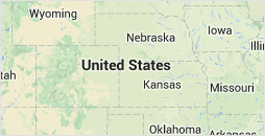Daniel Stewart
PHONE NUMBER : ------------
Map

The Basics of a Section 125 Cafeteria Plan
Benefits have become expected by employees these days, and providing benefits helps employers recruit top talent and retain the best employees. While you may already offer health insurance or an on-site gym, have you considered providing access to a section 125 cafeteria plan?
These plans are created by you, the employer, to let employees take part in tax-free benefits like health savings accounts, adoption assistance programs, group term life insurance plans, and more. Setting up a cafeteria plan isn't all that difficult, and offering this benefit to employees could make your company more desirable to work for.
Who Can Take Part in a Cafeteria Plan?
Before setting up a cafeteria plan for your company, you first need to know who is eligible to take part. In general, the only rule that you must abide by when choosing eligibility requirements is that you can not discriminate. Access to your plan must be equal for all employees in specific categories.
You can, however, make rules regarding eligibility based on things like employee start or hire dates and employment status as a full-time or part-time employee. You must apply these rules equally to everyone included in a particular category.
What Other Requirements Apply?
When choosing healthcare-related benefits to include in your cafeteria plan, the Internal Revenue Service requires that you offer employees the ability to choose at least one taxable benefit that is to be considered a part of an employee's wages for tax purposes. Additionally, you must offer the ability to choose one qualified pre-tax benefit. This benefit is not to be considered as a part of an employee's wages.
How Does This Benefit Employers?
In addition to serving as a recruitment and retention tool, a cafeteria plan under section 125 means that employers may lower their tax liability as well. FICA, FUTA, SUTA, and worker's compensation liabilities can all be lowered as the result of hosting a cafeteria plan. Additionally, you keep the funds, if any are leftover, in a flexible spending account (FSA) as these funds are "use it or lose it" at the end of the year.
Author Resource:-
Daniel Stewart has been helping people with their money management and personal finance with over 15 years' experience in business finance. You can find his thoughts at HSA strategy blog.
